A long time ago in the sleepy summers of my youth, I discovered the magic scenery and green mountains of Sligo and North Leitrim.
Then, as now, the gateway to all this splendor was through the bustling town of Sligo and along the slopes of Benbulben. At that time also, an irreversible connection was forged in my mind between the spirit of the landscape and the poetry of William Butler Yeats.
The dreamlike imagery of this place can alter the mind and inspire one’s inner creativity. This is especially true on windy days when moving mottled clouds send dancing patterns of light and shadow rolling over the hills. Like Yeats, I go back there from time to time to replenish my soul and refill my imagination.
I arrived in Sligo town the night before and spent the evening with good music and friendly conversation in Shoot the Crows - yes that’s the name of the pub! The next morning, the ominous tones of the weather forecast sent me uptown in search of a light rain jacket. I was keen to make a quick purchase and get on my bike; however, that’s not the way it happened.
I had forgotten that shopping in Sligo is a social affair and it would be impolite to rush your business or hurry the conversation by getting to the point. The man in the shop was knowledgeable on town planning and international politics and we had to settle these important matters before the conversation segued to my need for protection from the summer rain. Transaction complete, we found more common ground in cycling and he used a tourist map to indicate his preferred way to avoid the busy road. Local knowledge is always best, especially when it comes from a fellow cyclist.
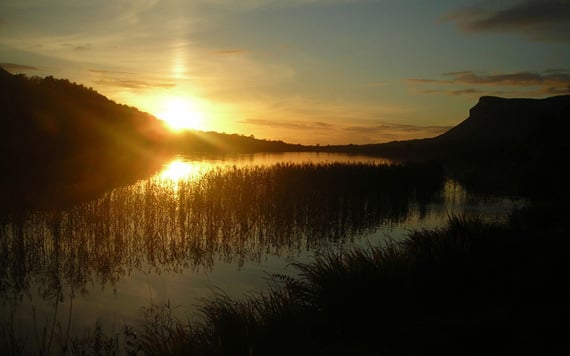
Sunset at Glencar, County Leitrim.
By mid-morning, I had followed his advice and was cycling up a country lane directly toward Benbulben. It was a good decision, I was rewarded by dramatic views of the majestic mountain replete with raised plateau, vertically scraped cliffs, and sloping fields. The changing light, deep shadows, and purple hue of the crevices brought the mountain to life. I imagined I was cycling over a giant sleeping figure sprawled out before the sea.
Climbing further, I looked back across the other side of Sligo Bay and Knocknarea Mountain, with its flat top and distinctive bump, known as Queen Maeve’s Grave.
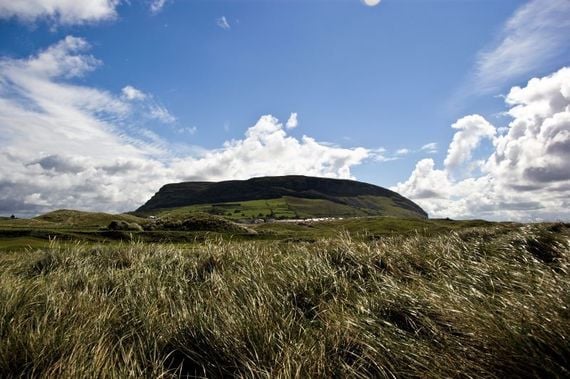
Knocknarea Mountain, County Sligo.
It was Sunday and although there was some movement, as locals passed to and from Mass, the road was generally quiet. I cycled at a leisurely pace. Soft rain accompanied me for some of the time but I never needed the jacket. The spell of the scenery had captured my thoughts as I freewheeled down to cross the main road just north of Drumcliff.
WB Yeats is buried in the churchyard at Drumcliff and the area around is known as Yeats Country. As I cycled further, I recalled the vivid imagery so characteristic of many of his poems; lines inspired perhaps by the very places on my journey.
“And walk along the dappled grass, And pluck till time and times are done, The silver apples of the moon, The golden apples of the Sun.” (from The Song of Wandering Angus).
Was this where he saw those colors and imagined those lines? I’d like to think so. It was as if Yeats was with me that day as I absorbed the strange beauty of County Sligo.
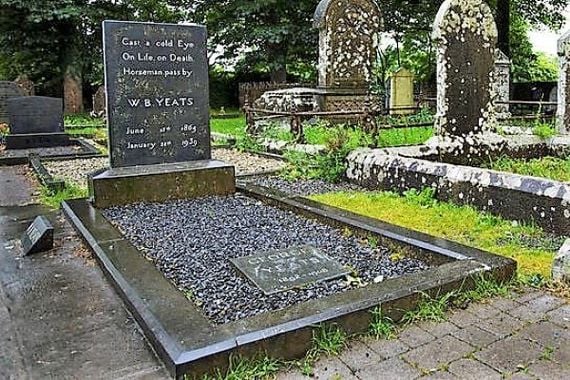
Yeat's Grave, at Drumcliffe.
My journey took me out past Lissadell House, home of the Gore-Booths, and immortalized in a Yeats’ poem. “The light of evening, Lissadell, Great windows open to the south, Two girls in silk kimonos, both beautiful, one a gazelle.” (from In Memory of Eva Gore-Booth and Con Markievicz).
The house is open to visitors and tours will take you back to days of grandeur, literature, and revolution.
Heading out the coast to loop north by Streedagh Point and beyond, I passed several elegantly presented houses with delightful gardens and bold paintwork. There was no one around, no sounds, just my turning wheels, and the odd distant dog barking.
At Grange, I crossed the main road again and headed inland toward the brooding hills. The road twisted and turned snaking between smaller hills, all the while the green mountains rose swiftly to my left.
Stopping once to take in the views I was approached by a shaggy white pony. He was immediately curious and seemed to like my company. We stood quietly together. I imagined he was happy spending his days chomping grass and saying hello to passers-by like myself.
Pushing further into the hills I turned to take a long loop through the wild and lonely Gleniff. This was a wonderful excursion. The glen was bleak and mysterious, hemmed in on all sides by steep escarpments. It had only the one road, as you enter it runs along one side then turns at the top of the glen and runs along the other side. You arrive back, 13 kilometers later, to a point just beyond where you started. I suppose that’s why it’s known locally as the horseshoe.
It was well worth the effort with views of what I can only describe as Sligo’s answer to the Matterhorn on the way in and a wide panorama on the way back, looking over Mullaghmore and out beyond to the shores of Donegal.
Not far from the glen I crossed the Ballaghnairillick River into County Leitrim. The road continued to skirt the mountains undulating with the shape of the land. Cycling gives a unique appreciation of the landscape, it can be hard work for sure, but there’s something special about the quiet rhythm of the pedals and the personal connection with the places you visit.

Scenic sunset in Yeats County, with Benbulben, in County Sligo.
My plan was to head back to Manorhamilton by way of Glenade and Mullies. I was still a long way off however turning on to the better road allowed me to pick up the pace. All the while the mountains were never far away. I caught their reflections in Glenade Lake and recalled the enthralment of long ago with evenings and turf fires. Snippets of the fantastic stories from my childhood came back to me. A mysterious creature who came from the lake, a strange man who wandered at twilight and the eerie sounds of the wind in the night.
The odd-shaped hills, quiet glens and vivid light surely stimulated the imagination of the storytellers. Magic creatures and other worlds abound in the folklore of these places. Strange things happen in the night, myth, and legend, a tale for every field and feature. The wonder of Leitrim will never be lost as it comes from the people and their close connection with the mountains, the lakes, and the land.
Lost in my thoughts, time and distance rolled by and I arrived in Manorhamilton renewed, refreshed and reinvigorated by the green mountains of Sligo and North Leitrim.
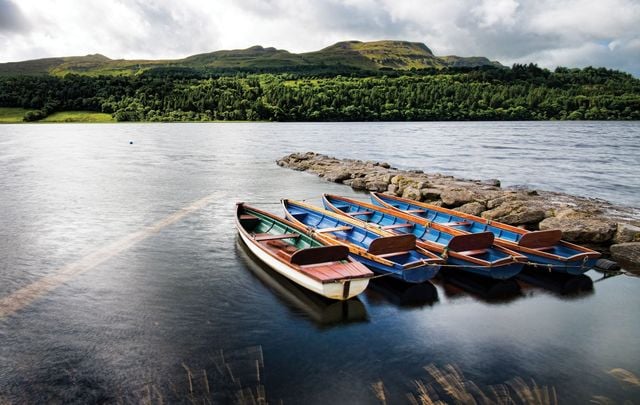
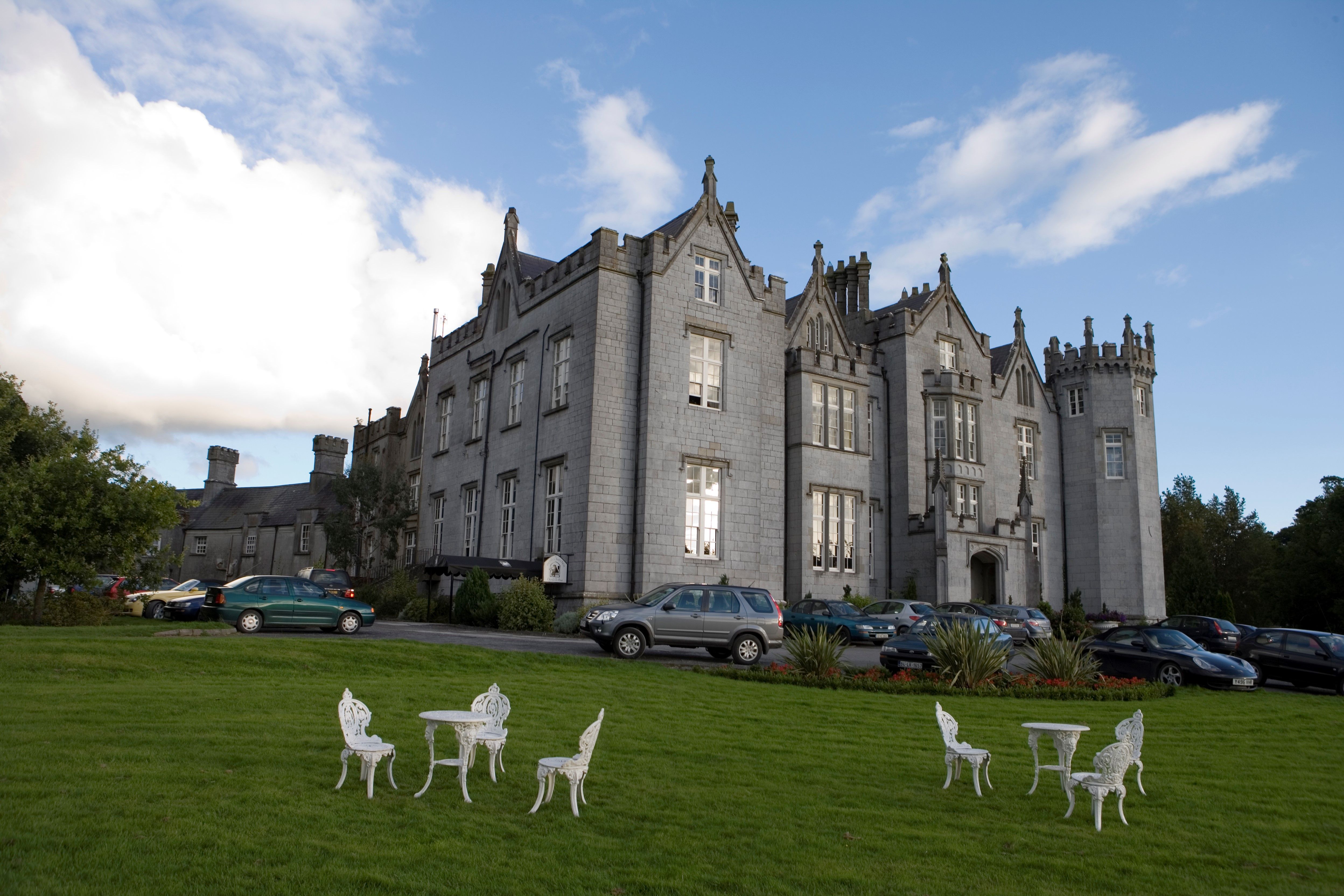

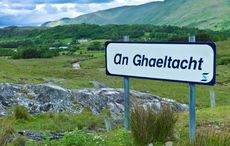
Comments